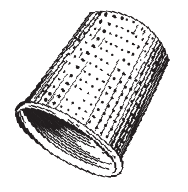The second day of June
a friend visits, come to help
in the garden. She bears a gift—
two chicken of the woods fungi
wrapped in yards of cling plastic,
in which her hiking companion
would have mummified them.
With the urgency of breath
I unwound them,
exposing them to air,
where they seemed to fluff feathers,
which were, of course, only the lobes
of their fruiting bodies, visible growth
of vast mycelial structures underground,
working in biotic miracles of communication,
life and decay.
I sliced off a wing for dinner, sautéed it
in butter and extra virgin olive oil
to toss with pasta primavera’s garden
vegetables and settled the rest in a huge
paper bag, nesting them for the night, cool,
as if they still slept on the forest floor,
close to their protective log.
In the morning I inhaled their earthy, woody
scent, an elixir of love and death, and set to work
as chef of the forest. Every clean, fresh slice went,
unctuous with butter and oil, into a heavy skillet,
seasoned with garlic, salt and pepper,
until three batches cooled and were frozen.
The woody stems, the blackened and spotted bits,
I chopped into fine mince to cast onto leaf litter,
on fallen trees and stumps, wasting nothing,
finding a spot for these magicians and their work.
It is fitting at my age—a crone living in the woods,
happiest in her garden, a little in love with death—
to aid the beautiful process of decay, changing death
into other forms of life, grateful to the microbiology
of soil and mycorrhizal magic in earth’s teeming mantle.


